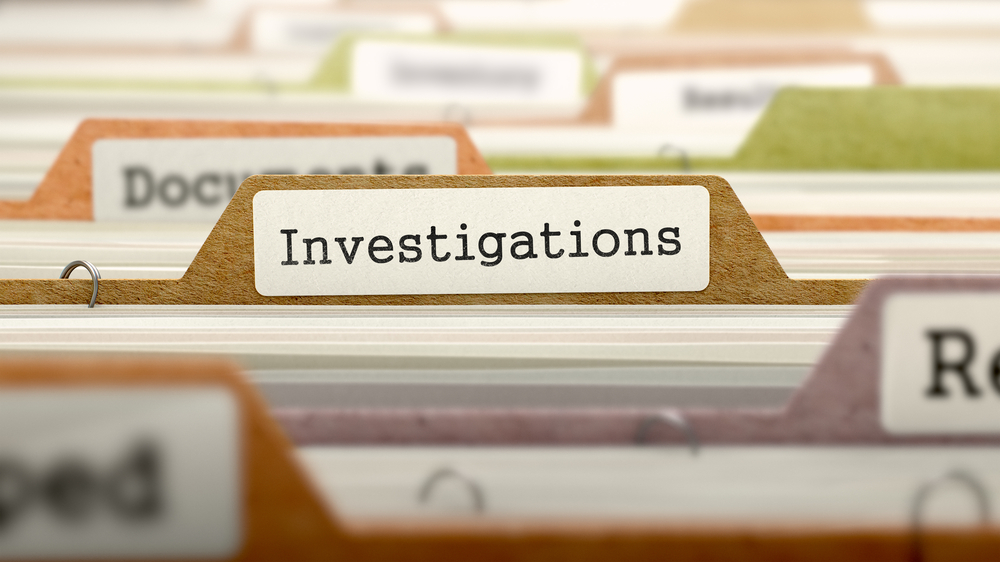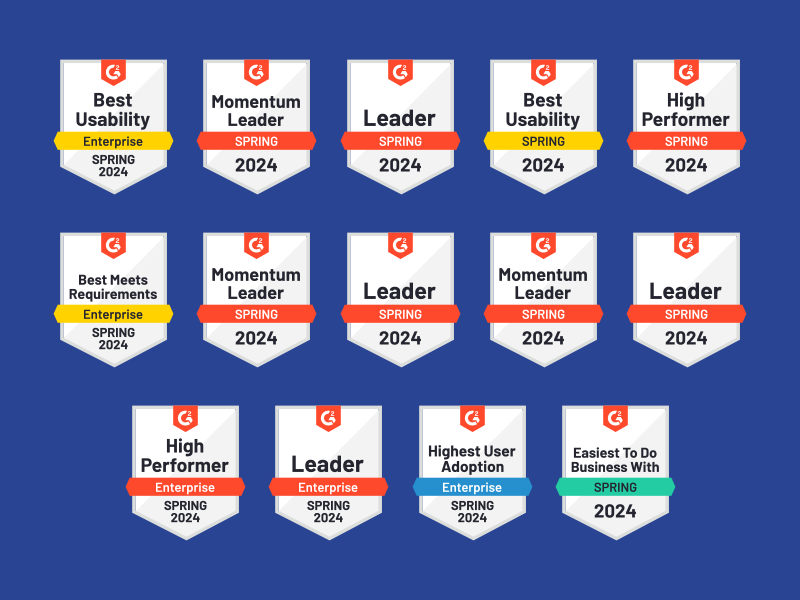In an ideal work environment, every employee would work efficiently together towards reaching a common set of goals. Unfortunately, no two people are alike, and often collaboration in the workplace can be compromised by misunderstandings, prejudice and employee misconduct. It’s important that every employer, through Human Resources (HR) or Employee Relations (ER) has best practices set into place to handle complaints and issues and, when necessary, conduct internal investigations to resolve employment-related problems.
What are employment-related internal investigations?
By definition, employment-related internal investigations are the processes followed by trained professionals in response to a complaint by an employee or group of employees against another person or group. HR or ER professionals should properly address and pursue all claims of misconduct such as harassment, workplace violence, discrimination, retaliation or other employment-related problems — whether deemed serious or not — that can occur at a workplace.
Internal investigations are vital for organizations because they provide proof that a workplace is taking all allegations seriously. Investigations are necessary to gather evidence and the facts, gain an understanding of who was involved and allow the investigator to come to a conclusion that is free from influence and subjectivity. Not everyone is equipped to effectively conduct an employee-related internal investigation, and it is possible you may not achieve the most fact-based conclusion without proper best practices put in place.
Best practices for internal investigations.
There are some basic steps you can follow to help you conduct internal investigations. Having a specified procedure to follow prior to an investigation is key to ensuring it is successful.
Here are some of our best practices and top tips for handling an internal investigation:
1. Respond as promptly as possible.
When an allegation is made against an employee at your organization, it’s important to be prompt with your response. Find out what could have triggered the allegation. Was this an instance of misconduct on the part of an employee or is it possible there is a weakness — or blind spot — within a business procedure that needs a solution?
2. Gain acceptance of the investigation process from everyone involved or connected to the allegation or complaint.
Executives, relevant employees, external and internal witnesses and even the investigator should all be aware and in agreement.
3. Keep documentation of every conversation, piece of evidence or data gathered based on your investigation.
This will be essential in the event that your internal investigation leads to legal action. You will also need this documentation when you write your formal decision.
4. Plan the questions you will ask during the interview phase of your investigation prior to sitting down with anyone.
Ensure you are asking open-ended questions and are speaking with witnesses, the complainant and the respondent one-on-one. Ask those involved not to speak to each other prior to their interview as it may disrupt the investigation. Although unlikely in some offices, it’s possible for employees to corroborate a story.
5. Only hire or assign someone to conduct an employee-related internal investigation who is qualified to do so.
Just because someone in IT can easily use the ER software to manage an investigation doesn’t mean they should be the one doing so. If your organization does not have the right employee who is trained in conducting impartial and effective internal investigations, it is a good decision to work with an outside resource that can follow the right procedures to ensure a smooth and objective investigation process.
6. If you’re in need of information from a wide group of people, it may be easier to use a questionnaire instead.
Although valuable, remember that having employees fill out questionnaires in the same space while sharing information can lead to a misrepresentation of what really happened and who did, heard or said what. You can prevent hearsay (having one person report on what another person heard from someone else and so on) by requiring the questionnaires to be done in a private space.
7. Pay attention to other information gathered during the interview and investigation procedure.
If, for example, you are investigating a claim of harassment but learn while investigating that the employee has also been over an hour late for work every day, it’s important to also follow that lead as well. It may seem less important but can help determine proper disciplinary action later in the process. It’s also important to proceed with caution in these types of situations, however, to avoid the appearance of retaliation, especially if you’re following up on information from a witness or victim.
investigating that the employee has also been over an hour late for work every day, it’s important to also follow that lead as well. It may seem less important but can help determine proper disciplinary action later in the process. It’s also important to proceed with caution in these types of situations, however, to avoid the appearance of retaliation, especially if you’re following up on information from a witness or victim.
There are many best practices you can use when handling employment-related internal investigations that your team can utilize to maximize success while maintaining professionalism and objectivity at all times. Whether you are working from an ER or HR perspective, while you begin developing the right strategy for your workplace, it’s also important to make an effort to prevent some common mistakes from occurring along the way.
Common mistakes for ER & HR professionals to avoid.
Conducting internal investigations requires a thorough understanding of investigative best practices. The last thing you want as an ER or HR professional is to have an investigation backfire because the investigator has been accused of not gathering enough evidence, or worse, discrimination against a specific employee.
There are multiple things you should keep in mind as to what not to do throughout internal investigations. A few common mistakes you can avoid include:
1. Not gathering enough physical evidence before beginning the interview process.
Many managers begin to find out the sides of the story before discovering what evidence there is. Using evidence as a foundation for your interviews, you can draw out responses that solidify the facts available.
2. Not being thorough enough in your investigation or drawing it out too long. There are definitely two extremes to this mistake.
In haste to solve an issue quickly, you may be tempted to quickly discover the facts and evidence while taking shortcuts or skipping critical best practices in the process. Don’t take too much time, however. If you begin to be seen as dragging out the investigation — possibly because you’re procrastinating or don’t want to “deal with the drama” — it’s going to hurt your own reputation and that of your employer. It will also provide ample time for evidence to disappear and accounts from witnesses to become blurry or forgotten.
3. Avoiding an issue before it requires an investigation.
You may not have necessarily known that a problem was occurring, however, claiming ignorance is not a strong defense for you when you’re asked why you didn’t discover the problem before it escalated. You can document employee relations issues with ER Software aimed toward managing issues long before they require an internal investigation.
4. Not being consistent in your investigative procedure.
Your HR or ER department, with the guidance of your employer, should have a firm set of practices to use in every internal employee-related investigation. Specific steps should be followed promptly and professionally by those managing the investigation. Guidelines need to be implemented to ensure that each investigation is objective and treated the same way. No one should feel like they aren’t being given the same process as another employee.
5. Failing to make a final determination
The entire point of handling an employment-related internal investigation is to come up with a conclusion based on the evidence you’ve gathered and the interviews that have been conducted. There should be enough information to come up with a solid decision that will put an official conclusion to the investigation.
Some internal investigations such as harassment or discrimination are sensitive subjects that need to be approached in a specific way. One pitfall of an internal investigation is the “gossip” that can ensue when word gets out across a department or company. When inaccurate information spreads, it can spoil the privacy of your employees and interfere with the evidence of your investigation. You can avoid the spread of gossip by having privacy regulations set into place with strict consequences when broken by employees. If an issue is serious enough, it may also be a wise decision to seek legal advice.
Leveraging the right tools to upgrade your ER & HR processes.
Dealing with workplace issues can be tough for both ER and HR managers, however, implementing advanced HR systems can simplify and improve the process. The solutions offered by HR Acuity LLC streamline your HR processes, making them more efficient and effective at managing your employees.
Ensuring your organization remains within compliance with any privacy requirements and other government or industry regulations is also essential. At HR Acuity, we use the best-in-class technology to provide secure, rich data insight, workplace training techniques and annual roundtable events with industry experts while providing a valuable resource for many other procedures that are tailored to your unique business or organizational needs.
Not sure if HR Acuity’s ER software is right for your organization? Contact us now to request a free demo.



